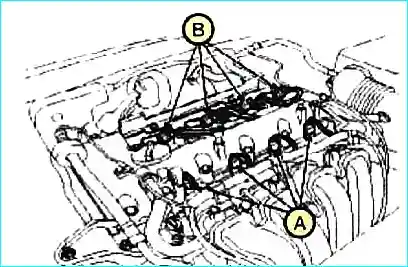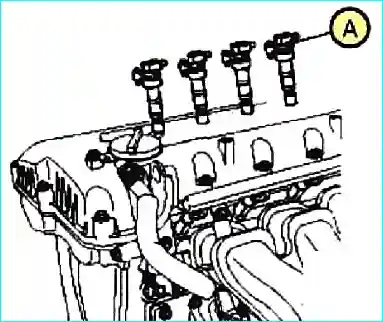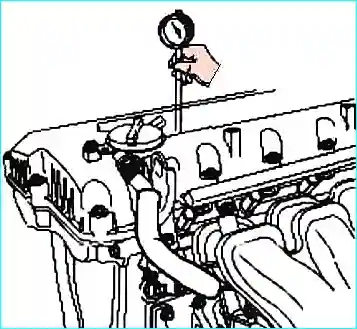If there is a loss of power, increased fuel consumption or increased oil consumption, it is necessary to check the compression in the engine cylinders
Warm up and stop the engine to normal operating temperature.
Disconnect the ignition coil (B) and injector (A) connectors.

Remove injectors (A)

Remove spark plugs. Using a 16 mm special key, unscrew 4 spark plugs.
Check the compression in each cylinder.
- - install a compression gauge in the hole under the spark plug.
- - open the throttle valve completely.
- - measure the compression by turning the crankshaft and starting the engine.
Make sure that the battery is fully charged to provide 200 rpm.
Compression testing should be done in as little time as possible.
Repeat the above operations for each cylinder.

Standard compression value: 1.283 kPa.
Minimum allowable value: 1.135 kPa.
Difference between compression of each cylinder: no more than 100 kPa.
If there is insufficient pressure in one or more cylinders, pour a small amount of engine oil through the spark plug hole into the cylinder and repeat steps 1 through 3.
If the compression has increased, then the compression rings are damaged or the piston has increased wear.
If the compression pressure has not changed, then the valve seats are probably damaged or the valve is not seated properly way.
Also possible cause may be damage to the cylinder head gasket.
Tighten the spark plugs.
Install the ignition coils.
Connect the injector connector and the ignition coil.





